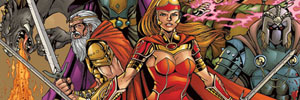Dated English had four complete instances: nominative,
accusative, genitive, and dative, as well as traces of important and locative cases. However, this case system largely disappeared during the Middle English period, and the functions served by cases in Old English are mostly performed by other means in Modern English. The only survivals of the case system are the inflected forms of pronouns (e.g. he, him, his) and the possessive ple, John’s book, which is the modern equivalent of the old genitive case ending -es ceny japan cupid.
cataphoric
A cataphoric word or phrase is one which refers forward to a word or phrase used subsequently in a text or conversation. Pronouns are frequently used cataphorically: for example, in ‘If you see him, please tell Bob to call’, him is cataphoric, referring forward to Bob. A related term is anaphoric, which describes words or phrases which refer back.
- Know v. 11e is defined as ‘With it, that, the fact, etc., used anaphorically or cataphorically in place of a fact referred to.’ An example is ‘The Prime Minister doesn’t know it yet but he’s going to get a visit’, in which it is cataphoric, referring forward to he’s going to get a visit.
- People pron. 2a is defined as ‘With anaphoric or cataphoric reference: one or some (of that previously or subsequently mentioned).’ An example is ‘If you have any, you should sell your rings’, in which any is cataphoric, referring forward to rings.
causative
A causative verb (or sense of a verb) is one that expresses causation: for example, raise can be described as a causative verb (as it means ‘cause to rise’) and spill is causative in ‘I spilled the milk’ (meaning ‘I caused the milk to spill’).
- Find v. 23c is defined as ‘Of a time, place, or other context: to be the setting in which (an event, development, etc.) takes place. In later use sometimes with causative sense: to result in (an event, development, etc.).’ An example of the causative sense is ‘An injury-time goal saw the team go out to Levski Sofia’: the goal by the other team was the cause of the loss.
condition
A clause is a grammatical unit which typically contains a verb (or verb phrase), and which may be a complete sentence in itself or may form part of a sentence.
For example, the sentence ‘I like folk music’ consists of one clause, while the sentence ‘I like folk music but I’m not keen on jazz’ consists of two clauses linked by but. Clauses (specifically, under conditions) often function as direct stuff, for example in ‘She admitted that she was not attracted to jazz.‘
- On AUGUR v. 1, meaning ‘to predict; to anticipate’, there is a set of quotations described as ‘With clause as object’. For example, in ‘I do not pretend to augur just what process of law will perform‘, the clause ‘what the courts will do’ functions as the head target of augur
- And you may conj. step 1 describes uses ‘Connecting coordinate clauses or sentences’. An example containing several clauses linked by and is ‘He saw the priest fold off and kiss new altar and then face about and bless all some one.’
cognate target
When the direct object of a verb is related to that verb in both form and meaning, it is a cognate object. For example, in she sang a beautiful song and I dreamed a dream, the nouns song and dream are cognate objects, as they are related to the verbs sing and dream.
- Make fun of v. 4b is defined as ‘With cognate object. To emit (a lples include ‘Theodore jokes a big wheezy laugh‘ and ‘Laugh out whatever humor at the hearth rings clear.’ The nouns laugh and laughter are both related to the verb laugh: they are cognate objects.
Category: Uncategorized










